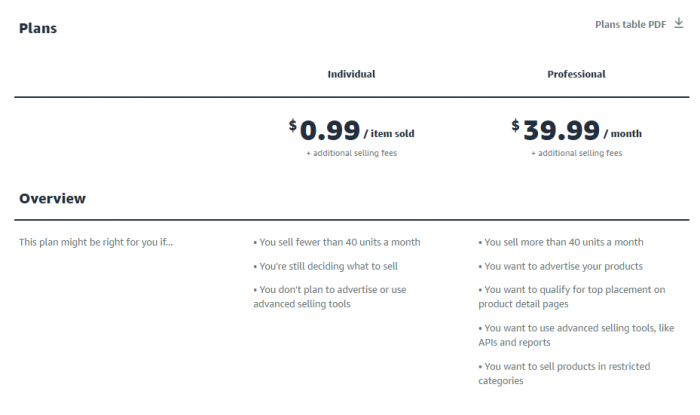What is Amazon Seller Central?
Amazon Seller Central is a platform offered by the world’s leading marketplace. Through this platform, a business can sell products online and have access to the millions of shoppers that use Amazon’s online marketplace. Seller Central allows business owners to become online retailers by using the platform’s e-commerce infrastructure and existing client base.
Difference between Seller Central and Vendor Central
If you want to set up a business online and use Amazon as your platform, you have two options. Both Seller Central and Vendor Central allow you to sell products online, but there are differences between these two interfaces.
Amazon Seller Central allows business owners to sell their products directly to Amazon customers, acting as third-party vendors. This is known as Fulfilment by Vendor (often abbreviated to FBV). Packaging and shipping are the merchant’s responsibility under this option. On the other hand, Amazon Vendor Central allows businesses to supply their products in bulk to Amazon and act as first-party suppliers. Under this scheme, there is no interaction between sellers and buyers, but the merchant lets Amazon handle the order by enrolling in the Fulfilled by Amazon program (often abbreviated to FBA). Under this program, vendors send their products to an Amazon warehouse, where it is stored until an order is placed. Warehouse staff then package and ship orders to customers.
Amazon Vendor Central is an invite-only program, whereas anyone can use Amazon Seller Central. Sellers who consistently deliver a strong performance under the Seller Central platform may receive an invitation to join Vendor Central.
Benefits and drawbacks of the Amazon Vendor Central
Vendors have access to an extensive range of marketing tools, ranging from sponsored product ads to premium content and in-depth analytics. Moreover, products sold under this scheme are listed under the “Ships and Sold by Amazon” tag, which can increase confidence among buyers and boost the vendor’s bottom line.
As for the drawbacks, and because Amazon acts as the seller, a product’s retail price is determined by them. Moreover, prices are subject to change at any time. Logistics and operational performance terms are also controlled by Amazon. Failing to meet those terms in a timely manner results in chargebacks. Payment terms for Amazon Vendor Central merchants are not as fast as those that apply to Seller Central and are set over 30, 60, or 90 days, as opposed to 2 weeks for Amazon Seller Central vendors.
Individual selling plan vs. professional selling plan
Amazon Seller Central is available under two plans: individual and professional. Under the individual selling plan, sellers are charged 99 cents for each product they sell. On the other hand, the professional selling plan is available at a monthly non-refundable rate of US$39.99.

Screenshot comparing the features of individual and professional selling plans of amazon.com
Features of the individual selling plan
- Pay-as-you-go plan that requires no upfront financial commitment.
- A good option for low-volume vendors.
- Product listings must be uploaded one at a time.
Features of the professional selling plan
- The monthly fee covers an unlimited number of sales.
- Vendors can upload multiple listings simultaneously.
- This plan comes with an inventory control feature, which allows vendors to easily keep track of their stock.
- A reporting tool is also included in the monthly fee.
- Gift wrapping and promotional services are also included.
Benefits of Amazon Seller Central
Business owners who use Amazon Seller Central to sell their products benefit from access to the platform’s large customer base. In addition, they benefit from discounted shipping rates, since Amazon negotiates lower fares with shipping companies and postal services.
When using the FBA option, customer service and product returns are also taken care of by Amazon. Moreover, vendors have access to Amazon’s warehouse facilities, so they do not need to add storage to their business costs.
Lastly, Amazon Seller Central comes with a range of analytics tools that merchants can use to optimize their product sales.
Related links
- https://sellercentral.amazon.de/gp/help/external/G521?language=en
- https://www.factor-a.com/vendor-central-vs-seller-central-which-one-should-i-choose-for-my-business/
